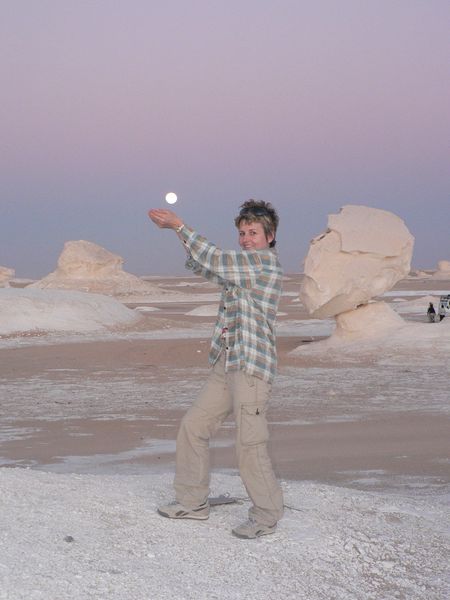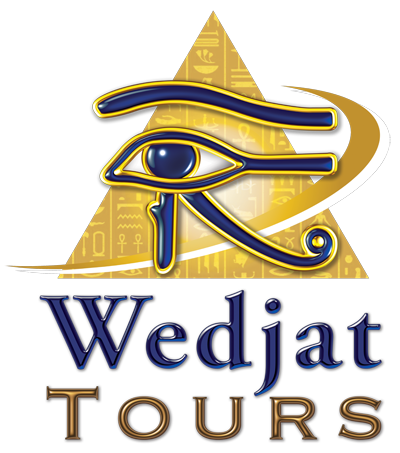White Desert National Park is located just slightly northwest of the central point of Egypt. The park covers an area of 115.8 square miles (300 sq. km).
The White Desert is part of the Farafra depression in the Sahara Desert. It also features the Farafra Oasis, the Ain El Maqfi Oasis, and the Ain El Wadi Oasis. The park is renowned for the white sands, white sand rock formations, and the introduction to the Great Sand Sea.
The larger Farafra depression covers an area of 380 square miles (980 sq. km) creating the second-largest depression in Egypt. However, it features the lowest number of inhabitants.
The white sands manifest as piles and rows of white piles scattered across orange sandy base landscapes, as rock spires, and as other unusual white rock formations. The white sand and white rocks are comprised of either white calcium, quartz crystals, or limestone.
In many places, the collection of white sand appears like snow that has frosted the desert. These white quartz crystals have created several unique picturesque rock shapes. The pinnacle white rock formation is known as Crystal Mountain. It is completely made out of crystal and features a hole through the middle of it.
The elevation of the park varies from 104.99 feet (32 m) to 1,158.14 feet (353 m) above sea level. The tallest point occurs at El Qess Abu Said. Some of the landscapes feature protruding orange-colored rock formations with white desert facets surrounding the base of each of these rugged rock features.
Along with protecting the unique white sands and rock formations of the Sahara Desert, the park also protects an array of wildlife. Some of the more popular species include Barbary sheep, fennec fox, Dorcas gazelle, jackal, red fox, Rhmim gazelle, Ruppell’s fox, and Sand cats.
Highlights
Crystal Mountain
Crystal Mountain is also called Crystal Rock. This is the most iconic rock formation in the national park. Although not as tall or big as Delicate Arch in Arches National Park, it gives you a similar type of sensation.
The good news is that this featured attraction is easily accessible right off the side of the main road. It is about 15 miles (24 km) north of Naqb As Sillim.
Great Sand Sea
The Great Sand Sea is a portion of the Sahara Desert that lies between Egypt and Libya. This portion of the desert covers an area of 27,799.36 square miles (72,000 sq. km). It is renowned for the abundant rolling sea of sand dunes that cover approximately three-quarters of the area.
The Great Sand Sea extends well beyond the national park boundaries which only serve as an introduction into this magnificent presentation of nature. However, there are opportunities to discover and explore the White Desert as part of an explorative adventure that travels deeper into the Great Sand Sea providing a more thorough discovery of the splendor of the Sarah Desert.





 And then Add to Home Screen.
And then Add to Home Screen.